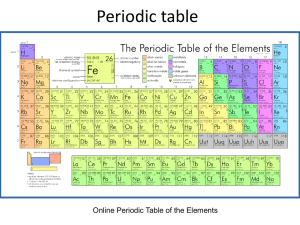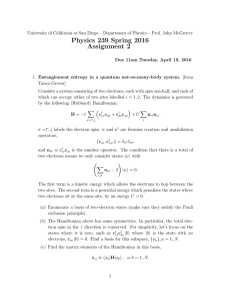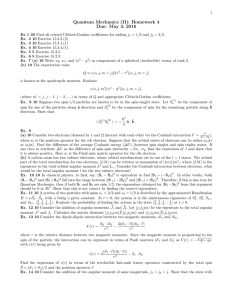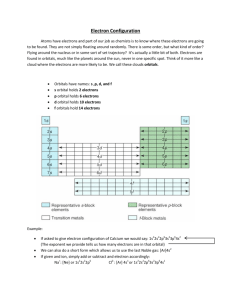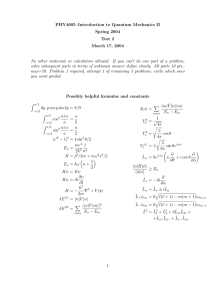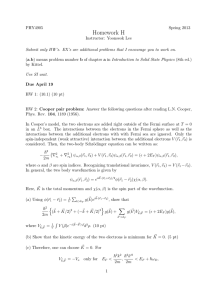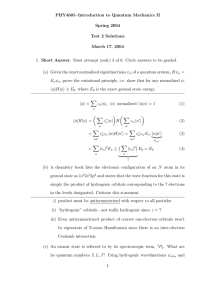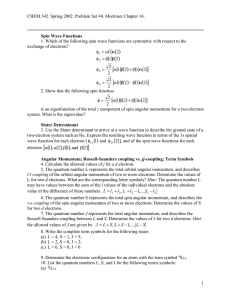PHY4604–Introduction to Quantum Mechanics Fall 2004 Problem Set 11 Dec. 1,2004
advertisement
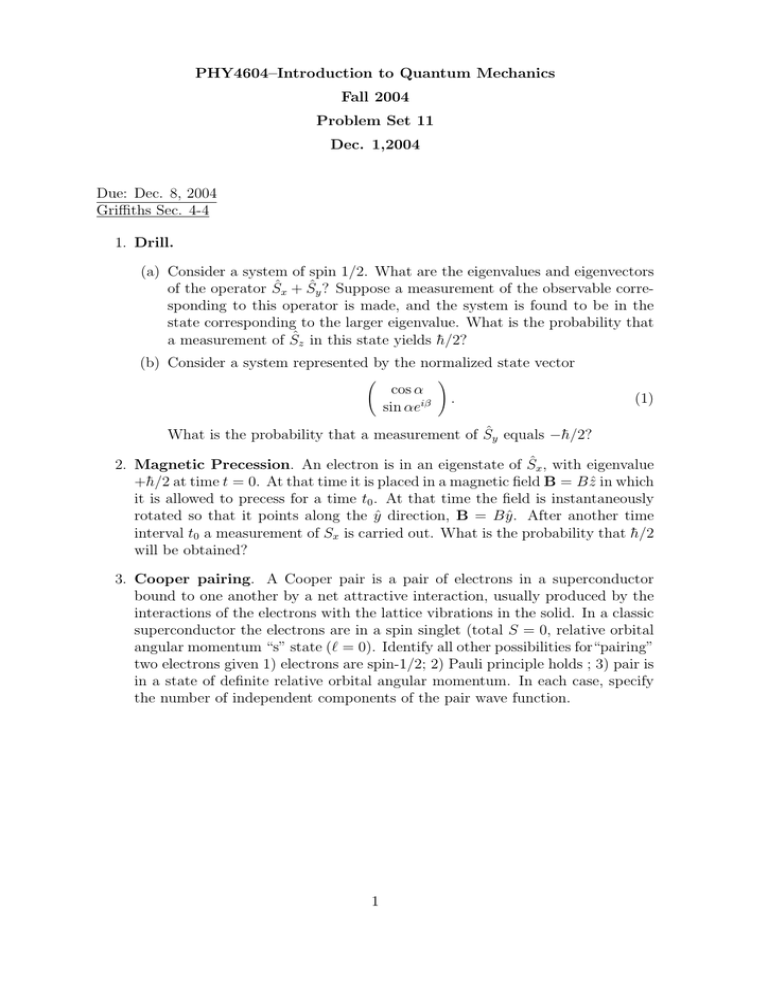
PHY4604–Introduction to Quantum Mechanics Fall 2004 Problem Set 11 Dec. 1,2004 Due: Dec. 8, 2004 Griffiths Sec. 4-4 1. Drill. (a) Consider a system of spin 1/2. What are the eigenvalues and eigenvectors of the operator Ŝx + Ŝy ? Suppose a measurement of the observable corresponding to this operator is made, and the system is found to be in the state corresponding to the larger eigenvalue. What is the probability that a measurement of Ŝz in this state yields h̄/2? (b) Consider a system represented by the normalized state vector à cos α sin αeiβ ! . (1) What is the probability that a measurement of Ŝy equals −h̄/2? 2. Magnetic Precession. An electron is in an eigenstate of Ŝx , with eigenvalue +h̄/2 at time t = 0. At that time it is placed in a magnetic field B = B ẑ in which it is allowed to precess for a time t0 . At that time the field is instantaneously rotated so that it points along the ŷ direction, B = B ŷ. After another time interval t0 a measurement of Sx is carried out. What is the probability that h̄/2 will be obtained? 3. Cooper pairing. A Cooper pair is a pair of electrons in a superconductor bound to one another by a net attractive interaction, usually produced by the interactions of the electrons with the lattice vibrations in the solid. In a classic superconductor the electrons are in a spin singlet (total S = 0, relative orbital angular momentum “s” state (` = 0). Identify all other possibilities for“pairing” two electrons given 1) electrons are spin-1/2; 2) Pauli principle holds ; 3) pair is in a state of definite relative orbital angular momentum. In each case, specify the number of independent components of the pair wave function. 1
